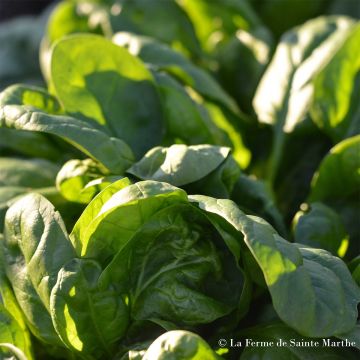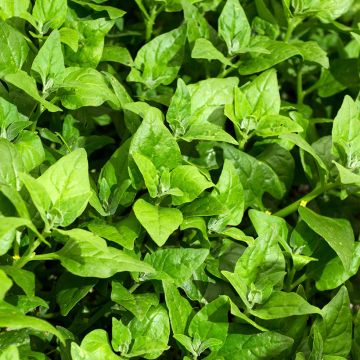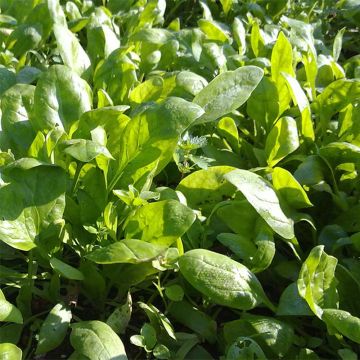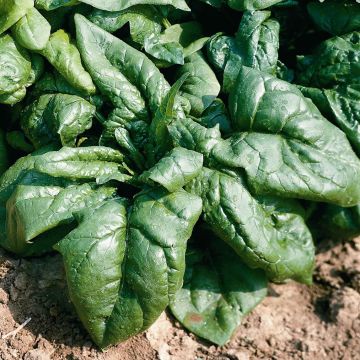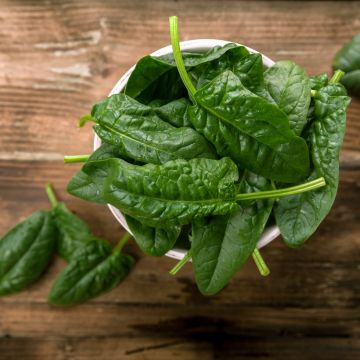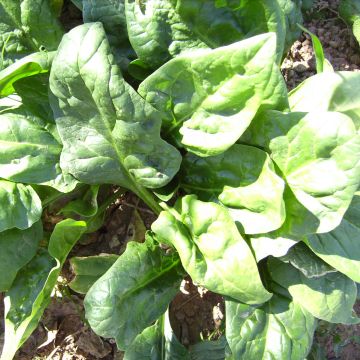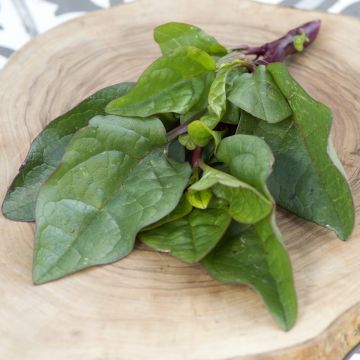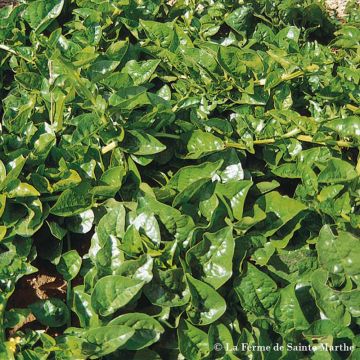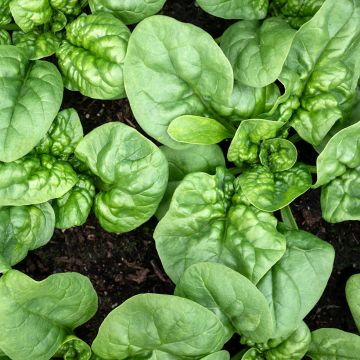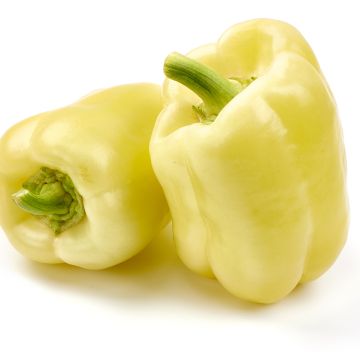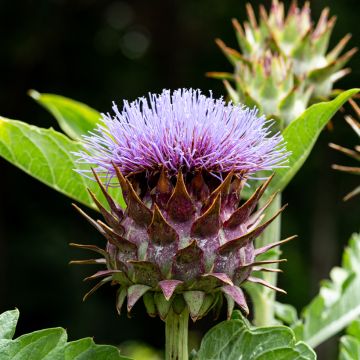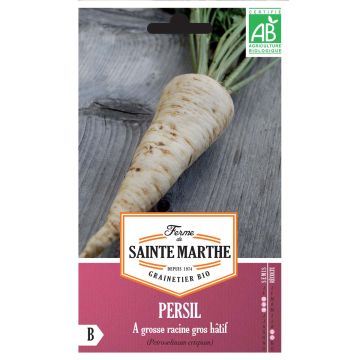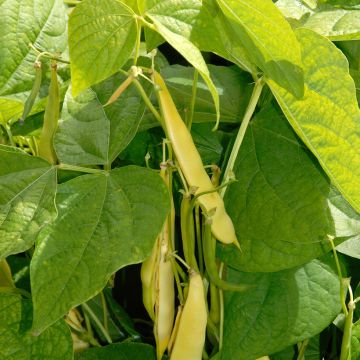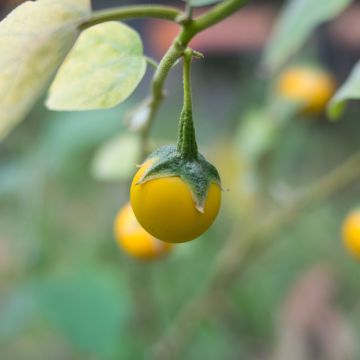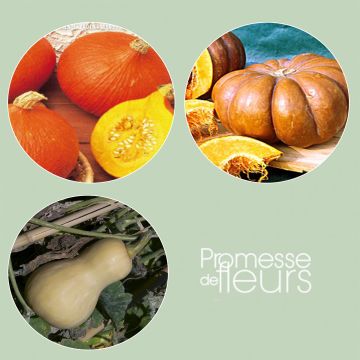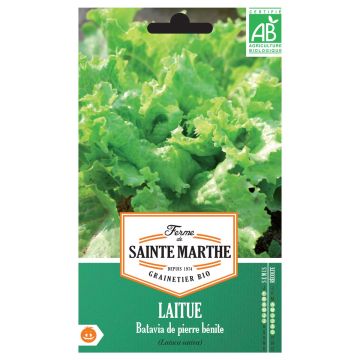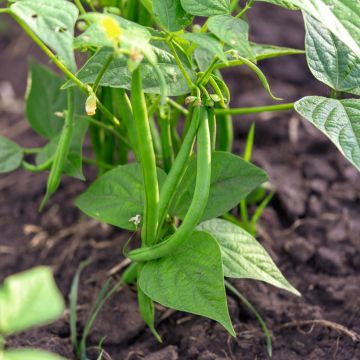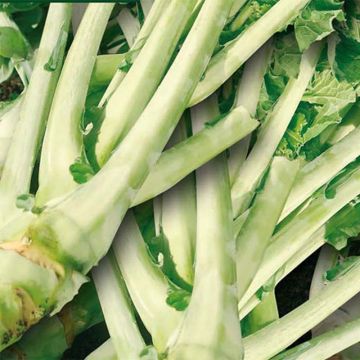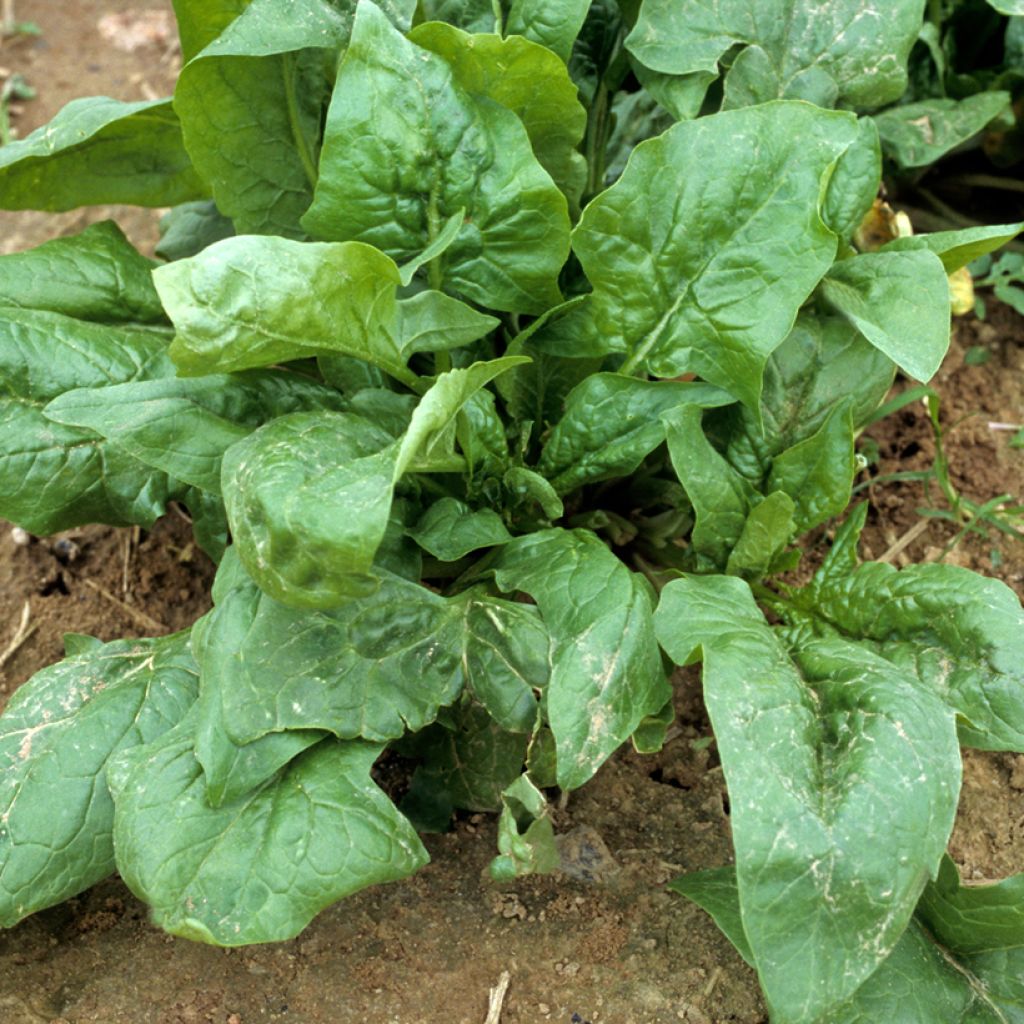

Spinach Matador Organic - Viking Spinach
Spinach Matador Organic - Viking Spinach
Spinacia oleracea Matador
Spinach
I planted the Matador variety in the spring with great success, both in the garden and in the kitchen! My question is, is the Matador variety hybrid or not?
Manu, 25/06/2019
This item cannot be shipped to the selected country
Dispatch by letter from €3.90
More information
Schedule delivery date,
and select date in basket
This plant carries a 6 months recovery warranty
More information
We guarantee the quality of our plants for a full growing cycle, and will replace at our expense any plant that fails to recover under normal climatic and planting conditions.
Seed-only orders are dispatched by sealed envelope. The delivery charge for seed-only orders is €3.90.

Description
Matador Spinach or Viking Spinach is a variety with dark green and fleshy leaves. When raw, it adds its very characteristic taste to all mixed salads. When cooked, it is best eaten lightly blanched. This vegetable has fallen out of favour and deserves to be rediscovered with recipes such as Lebanese fatayers, Indian recipes, etc. All spices and seasonings enhance Spinach beautifully. This particularly hardy variety is well suited to growing in autumn with excellent productivity, but it can be grown all year round. It can be sown from March and April to harvest in April and June then in August - September for harvesting in October and November.
Traditionally mistreated by school catering services, spinach is the vegetable most dreaded by children. Yet, it is a tasty vegetable that can be prepared in a thousand ways: raw in spring salads, in Japanese fritters, quickly stir-fried in a wok, or even in a savoury tart with goat cheese or salmon.
Originating from Iran and belonging to the Chenopodiaceae family, like Beetroot and Chard, spinach is widely cultivated worldwide for its flavour and nutritional qualities. While the famous Popeye long touted its iron content, its remarkable feature is its high content of vitamin B9.
The numerous varieties of spinach require either short or long days to prevent them from going to seed too quickly. Each variety has specific requirements that must be respected: spring and/or autumn, winter, and even summer. Some varieties have pungent seeds, traditionally used for spring or late autumn sowings. You can grow spinach all year round if you choose your seeds carefully.
Spinach prefers consistent, moist, and rich soils, particularly rich in nitrogen and potash. They thrive in the sun during winter and in partial shade or even shade during the summer or in hot regions.
Harvest: Spinach is harvested leaf by leaf, according to their growth and needs. The leaves located around the outside of the plant are cut, allowing the heart to continue developing and producing new leaves. The entire clump is only harvested when the plant shows the first signs of going to seed.
Storage: Spinach does not keep well in the refrigerator as it tends to soften, it is best consumed a few hours after harvesting. However, you can freeze it after blanching it for 3 minutes in salted boiling water.
The gardener's tip: Did you know that spinach can be used as green manure? Sown in autumn at a rate of 30 grams per square metre it can absorb and store nitrogen present in the soil. This way, the nitrogen is preserved and not leached away by winter rains. A good way to recycle a forgotten packet of seeds past its expiration date!
Report an error about the product description
Harvest
Plant habit
Foliage
Botanical data
Spinacia
oleracea
Matador
Chenopodiaceae
Spinach
Western Europe
Annual
Other Spinach seeds
Planting and care
Spinach seeds germinate at a temperature of around 16 °C (60.8°F) in about fifteen days. Sow directly in the ground (one to two months earlier under a cloche for early varieties), in the sun, in partial shade or shade, depending on your climate.
Follow the recommendations regarding the time of sowing, otherwise your plants may prematurely go to seed.
Lightly rake fairly firm soil then make furrows 25 to 30 cm (10 to 12in) apart, with a depth of one to two centimetres. Sow in rows, spacing the seeds 2 cm (1in) apart. Thin out keeping only one plant every 10/15 cm (4/6in).
Spinach is best when fresh so stagger your sowings to enjoy a longer harvest.
Cultivation: Spinach is a fairly demanding vegetable, particularly in nitrogen and potassium. It requires well-fertilised soil. It is advisable to apply mature compost (about 3 kg per m2), by raking to a depth of 5 cm (2in) in autumn, after digging the soil as for any vegetable crop. An application of nitrogen-rich fertiliser such as "fish blood and bone" is often welcome. It prefers neutral to slightly acidic soils (pH between 5.5 and 7).
Some varieties of spinach are quite susceptible to downy mildew, a fungal disease that occurs in mild and humid weather. Soe fairly thinly so that the crop remains well-ventilated. You can spray a solution of Bordeaux mixture, but crop rotation remains the best prevention.
In terms of companion planting, spinach is a good neighbour that does not harm any other vegetable. It is even reputed to be beneficial to Cauliflower, Cabbage, Potato, and Radish as it enhances their yields. Gertrude Franck, an exceptional gardener, used to interplant a row of spinach between each row of vegetables, which served both for cooking and as green manure.
Seedlings
Care
Intended location
-
, onOrder confirmed
Reply from on Promesse de fleurs
Vegetable seeds
Haven't found what you were looking for?
Hardiness is the lowest winter temperature a plant can endure without suffering serious damage or even dying. However, hardiness is affected by location (a sheltered area, such as a patio), protection (winter cover) and soil type (hardiness is improved by well-drained soil).

Photo Sharing Terms & Conditions
In order to encourage gardeners to interact and share their experiences, Promesse de fleurs offers various media enabling content to be uploaded onto its Site - in particular via the ‘Photo sharing’ module.
The User agrees to refrain from:
- Posting any content that is illegal, prejudicial, insulting, racist, inciteful to hatred, revisionist, contrary to public decency, that infringes on privacy or on the privacy rights of third parties, in particular the publicity rights of persons and goods, intellectual property rights, or the right to privacy.
- Submitting content on behalf of a third party;
- Impersonate the identity of a third party and/or publish any personal information about a third party;
In general, the User undertakes to refrain from any unethical behaviour.
All Content (in particular text, comments, files, images, photos, videos, creative works, etc.), which may be subject to property or intellectual property rights, image or other private rights, shall remain the property of the User, subject to the limited rights granted by the terms of the licence granted by Promesse de fleurs as stated below. Users are at liberty to publish or not to publish such Content on the Site, notably via the ‘Photo Sharing’ facility, and accept that this Content shall be made public and freely accessible, notably on the Internet.
Users further acknowledge, undertake to have ,and guarantee that they hold all necessary rights and permissions to publish such material on the Site, in particular with regard to the legislation in force pertaining to any privacy, property, intellectual property, image, or contractual rights, or rights of any other nature. By publishing such Content on the Site, Users acknowledge accepting full liability as publishers of the Content within the meaning of the law, and grant Promesse de fleurs, free of charge, an inclusive, worldwide licence for the said Content for the entire duration of its publication, including all reproduction, representation, up/downloading, displaying, performing, transmission, and storage rights.
Users also grant permission for their name to be linked to the Content and accept that this link may not always be made available.
By engaging in posting material, Users consent to their Content becoming automatically accessible on the Internet, in particular on other sites and/or blogs and/or web pages of the Promesse de fleurs site, including in particular social pages and the Promesse de fleurs catalogue.
Users may secure the removal of entrusted content free of charge by issuing a simple request via our contact form.
The flowering period indicated on our website applies to countries and regions located in USDA zone 8 (France, the United Kingdom, Ireland, the Netherlands, etc.)
It will vary according to where you live:
- In zones 9 to 10 (Italy, Spain, Greece, etc.), flowering will occur about 2 to 4 weeks earlier.
- In zones 6 to 7 (Germany, Poland, Slovenia, and lower mountainous regions), flowering will be delayed by 2 to 3 weeks.
- In zone 5 (Central Europe, Scandinavia), blooming will be delayed by 3 to 5 weeks.
In temperate climates, pruning of spring-flowering shrubs (forsythia, spireas, etc.) should be done just after flowering.
Pruning of summer-flowering shrubs (Indian Lilac, Perovskia, etc.) can be done in winter or spring.
In cold regions as well as with frost-sensitive plants, avoid pruning too early when severe frosts may still occur.
The planting period indicated on our website applies to countries and regions located in USDA zone 8 (France, United Kingdom, Ireland, Netherlands).
It will vary according to where you live:
- In Mediterranean zones (Marseille, Madrid, Milan, etc.), autumn and winter are the best planting periods.
- In continental zones (Strasbourg, Munich, Vienna, etc.), delay planting by 2 to 3 weeks in spring and bring it forward by 2 to 4 weeks in autumn.
- In mountainous regions (the Alps, Pyrenees, Carpathians, etc.), it is best to plant in late spring (May-June) or late summer (August-September).
The harvesting period indicated on our website applies to countries and regions in USDA zone 8 (France, England, Ireland, the Netherlands).
In colder areas (Scandinavia, Poland, Austria...) fruit and vegetable harvests are likely to be delayed by 3-4 weeks.
In warmer areas (Italy, Spain, Greece, etc.), harvesting will probably take place earlier, depending on weather conditions.
The sowing periods indicated on our website apply to countries and regions within USDA Zone 8 (France, UK, Ireland, Netherlands).
In colder areas (Scandinavia, Poland, Austria...), delay any outdoor sowing by 3-4 weeks, or sow under glass.
In warmer climes (Italy, Spain, Greece, etc.), bring outdoor sowing forward by a few weeks.

































